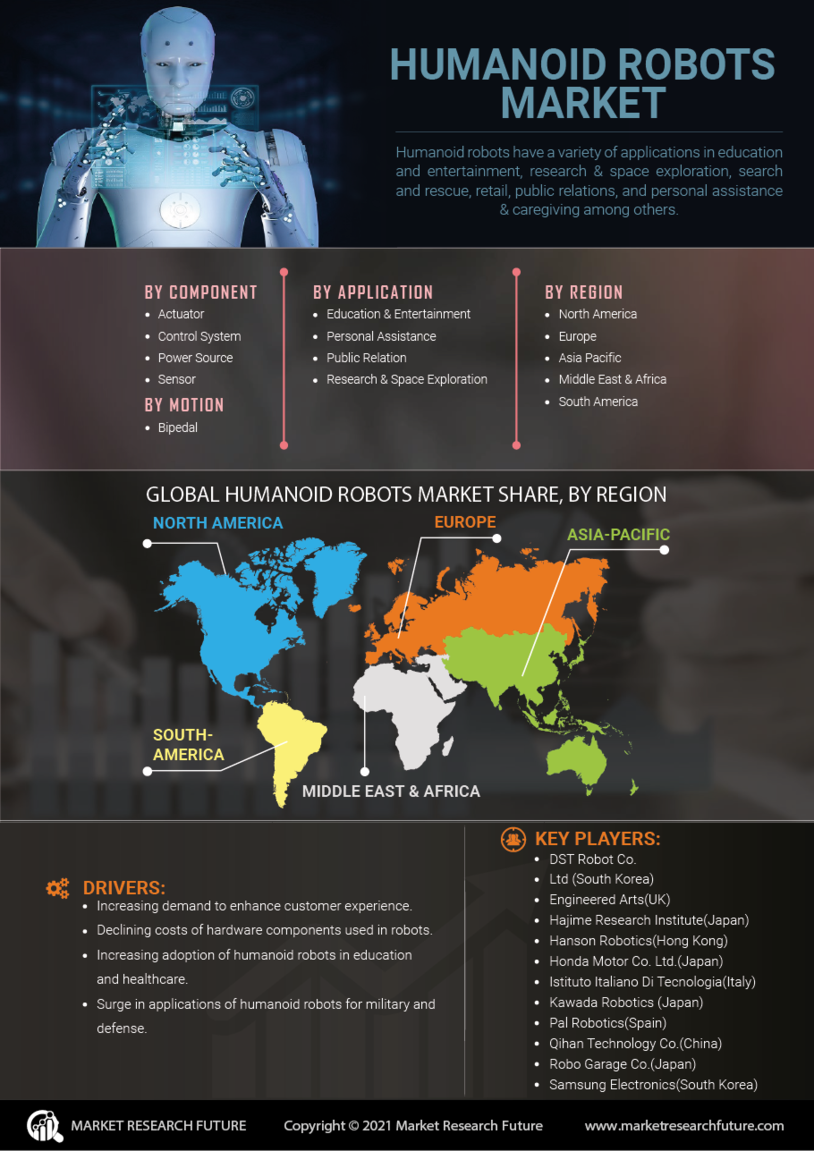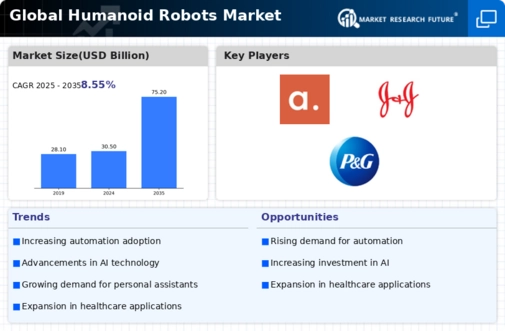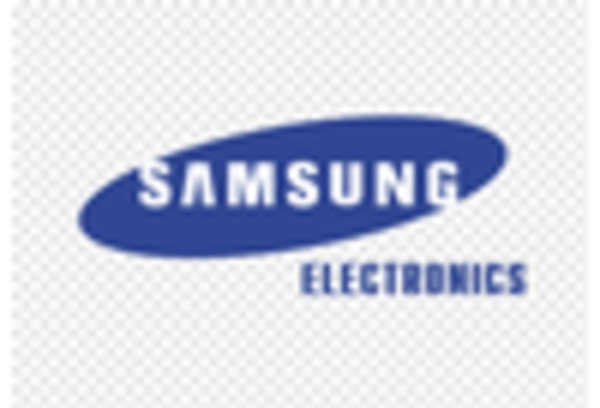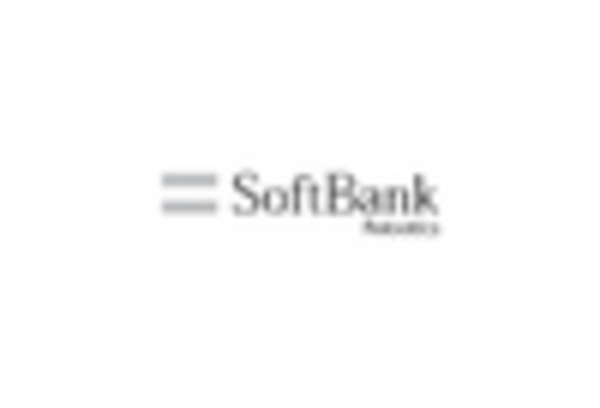The Humanoid Robots Market is currently characterized by a dynamic competitive landscape, driven by advancements in artificial intelligence (AI), automation, and increasing demand for robots in various sectors such as healthcare, manufacturing, and service industries. Major players like Boston Dynamics (US), SoftBank Robotics (JP), and Toyota (JP) are at the forefront, each adopting distinct strategies to enhance their market positioning. Boston Dynamics (US) focuses on innovation and cutting-edge robotics technology, while SoftBank Robotics (JP) emphasizes partnerships and collaborations to expand its product offerings. Toyota (JP) is leveraging its automotive expertise to integrate humanoid robots into its manufacturing processes, thereby enhancing operational efficiency. Collectively, these strategies contribute to a competitive environment that is increasingly centered around technological advancement and strategic partnerships.
Key business tactics within the Humanoid Robots Market include localizing manufacturing and optimizing supply chains to enhance responsiveness to market demands. The market structure appears moderately fragmented, with several key players exerting influence over various segments. This fragmentation allows for niche players to emerge, while larger companies consolidate their positions through strategic acquisitions and partnerships, thereby shaping the competitive dynamics.
In November 2025, Boston Dynamics (US) announced the launch of its latest humanoid robot, which incorporates advanced AI capabilities for improved interaction with humans. This strategic move is significant as it positions the company to capture a larger share of the service robotics market, particularly in sectors requiring human-robot collaboration. The introduction of this robot is likely to enhance Boston Dynamics' reputation as a leader in innovation, potentially attracting new clients and partnerships.
In October 2025, SoftBank Robotics (JP) entered into a strategic partnership with a leading healthcare provider to deploy humanoid robots in patient care settings. This collaboration is pivotal as it not only expands SoftBank's market reach but also addresses the growing need for automation in healthcare, particularly in elder care. The partnership underscores the potential for humanoid robots to enhance service delivery in critical sectors, thereby reinforcing SoftBank's competitive edge.
In September 2025, Toyota (JP) unveiled its humanoid robot designed specifically for manufacturing environments, aimed at assisting workers in assembly lines. This initiative reflects Toyota's commitment to integrating robotics into its operations, enhancing productivity and safety. The strategic importance of this development lies in its potential to streamline manufacturing processes, reduce labor costs, and improve overall efficiency, thereby solidifying Toyota's position in the market.
As of December 2025, current trends in the Humanoid Robots Market are heavily influenced by digitalization, sustainability, and the integration of AI technologies. Strategic alliances are increasingly shaping the competitive landscape, allowing companies to pool resources and expertise to drive innovation. Looking ahead, competitive differentiation is likely to evolve from traditional price-based competition to a focus on technological innovation, reliability in supply chains, and the ability to deliver customized solutions. This shift suggests that companies that prioritize R&D and strategic collaborations will be better positioned to thrive in the rapidly evolving market.
















Leave a Comment